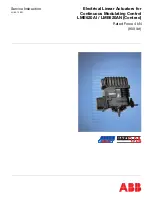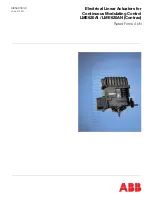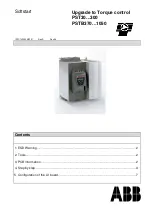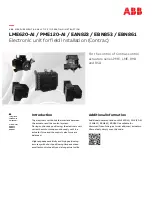
Command Syntax - Binary
Some commands have an equivalent binary value. Binary communication mode can be executed
much faster than ASCII commands. Binary format can only be used when commands are sent
from the PC and cannot be embedded in an application program.
Binary Command Format
All binary commands have a 4 byte header and are followed by data fields. The 4 bytes are
specified in hexadecimal format.
Header Format:
Byte 1
specifies the command number between 80 to FF. The complete binary command number
table is listed below.
Byte 2
specifies the # of bytes in each field as 0,1,2,4 or 6 as follows:
00
No data fields (i.e. SH or BG)
01
One byte per field
02
One word (2 bytes per field)
04
One long word (4 bytes) per field
06
Galil real format (4 bytes integer and 2 bytes fraction)
Byte 3
specifies whether the command applies to a coordinated move as follows:
00
No coordinated motion movement
01
Coordinated motion movement
For example, the command STS designates motion to stop on a vector motion. The third byte for
the equivalent binary command would be 01.
Byte 4
specifies the axis # or data field as follows
Bit 7 = H axis or 8
th
data field
Bit 6 = G axis or 7
th
data field
Bit 5 = F axis or 6
th
data field
Bit 4 = E axis or 5
th
data field
Bit 3 = D axis or 4
th
data field
Bit 2 = C axis or 3
rd
data field
Bit 1 = B axis or 2
nd
data field
Bit 0 = A axis or 1
st
data field
Data fields Format
Data fields must be consistent with the format byte and the axes byte. For example, the command
PR 1000,, -500 would be
A7 02 00 05 03 E8 FE 0C
where A7 is the command number for PR
02 specifies 2 bytes for each data field
00 S is not active for PR
05 specifies bit 0 is active for A axis and bit 2 is active for C axis (2
0
+ 2
2
=5)
66
•
Chapter 5 Command Basics
DMC-1600
















































